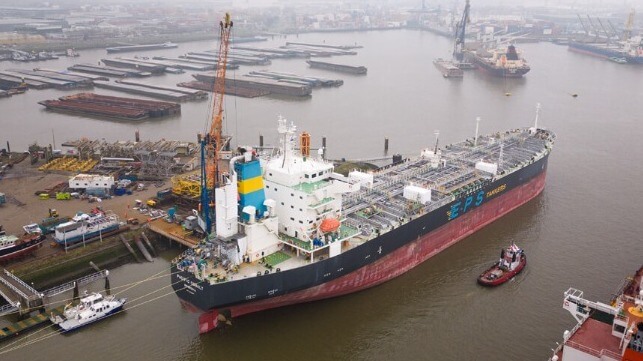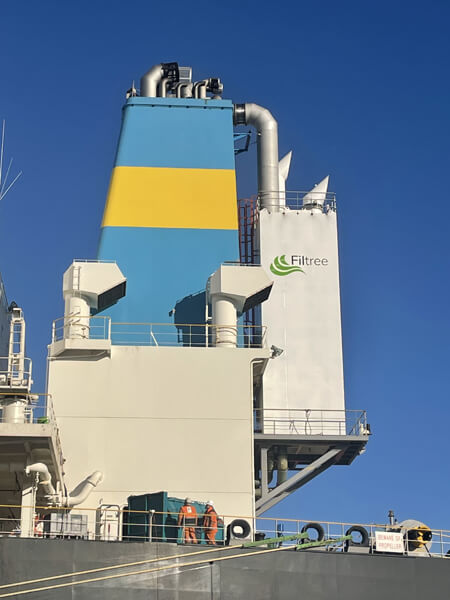First Carbon Capture System Installed on EPS Managed Tanker

Efforts are continuing to advance the use of technologies to capture CO2 emissions from in-service vessels. In the latest example, Singapore-headquartered Eastern Pacific Shipping reports it has completed the installation of a filtering and carbon capture technology from Dutch start-up Value Marine. Started in 2017, the company is focused on reducing the environmental impact of the shipping industry.
The installation was recently completed aboard the chemical tanker Pacific Cobalt, a 49,886 dwt vessel managed by Eastern Pacific. Registered in Liberia, the vessel was built in 2020. It measures 598 feet in length and is fueled by conventional fossil fuels.
Value Marine’s Filtree system is installed in the funnel of the vessel and is expected to filter sulfur and 99 percent of particulate matter. Value Marine’s Carbon Capture & Storage (CCS) module added to the system can capture up to 40 percent of CO2 emissions from the vessel’s main and auxiliary engines.
According to Value Maritime Co-Founder & Director Maarten Lodewijks, the installation was completed in just 17 days managed jointly by EPS’s and VM’s sea and shore staff. It included the installation of the prefabricated gas filtering system as well as recoated and converted an onboard tank during the refit which will be used to shore the CO2.

Installation of the carbon capture system was completed in 17 days on the EPS managed tanker (EPS)
Value Marine’s technology works by capturing the CO2 in a special chemical used during the filtration process. The chemical with the captured CO2 is stored in the tank which has sufficient storage space to hold more than 200 tons of CO2 in a single voyage. Once the tank is full, the chemical will be pumped out in port and delivered to end users, such as greenhouses or synthetic fuel producers, who will be able to release the CO2. According to Value Marine, the CO2 can also be placed into carbon sequestration networks, while the chemical will then be returned to the vessel for reuse to capture more CO2.
EPS’ CEO Cyril Ducau highlights his belief that 2023 is a critical year for the shipping industry saying that the industry needs to “start moving the needle significantly,” if it is going to reach the goals for net-zero emissions. He notes that EPS is developing a portfolio of solutions including dual fuel vessels both with LNG and recently its first ethane-fueled tankers.
“Advanced decarbonization technology, like the CCS system from Value Maritime, offers a concrete solution that can be implemented on existing vessels,” says Ducau. “The result is an immediate carbon emission reduction while removing the need to wait for the development and rationalization of alternative green fuel infrastructure.”
The Pacific Cobalt departed Rotterdam on January 28 after the installation of the new system. The vessel recently arrived in Venice as its first port as it continues testing the CCS technology. It is Value Marine’s first installation in the tanker market following 2021 and 2022 projects adding the technology to smaller, container feeder ships operating in Europe.
Several other companies are testing technologies that can be used to capture carbon emissions aboard ships. In 2021, Mitsubishi working with Japan’s “K” Line success fueled tested the first small unit installed aboard an ocean-going vessel, while early in 2022 Wartsila reported its first tests working with Norwegian shipowner Solvang. The companies said they expected to start full-scale tests in 2023.
Once thought to be unlikely for application to ships, carbon capture is quickly emerging as a possible solution to help ship owners and operators to address carbon emissions similar to the rapid growth in scrubbers in the earlier efforts to cut gas emissions. Several companies are also looking at specialized applications including a capture technology to reduce or eliminate methane slip from LNG-fueled vessels.
No comments:
Post a Comment